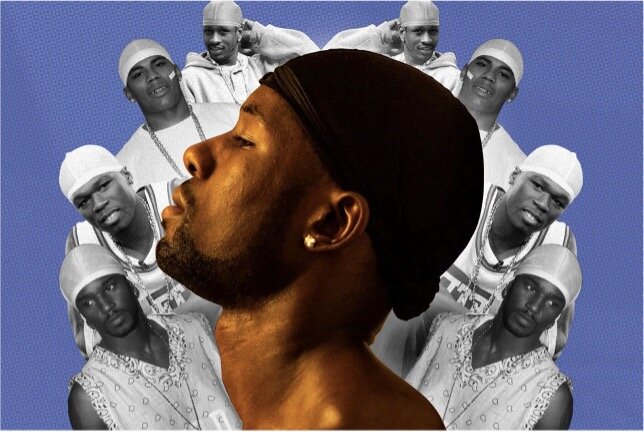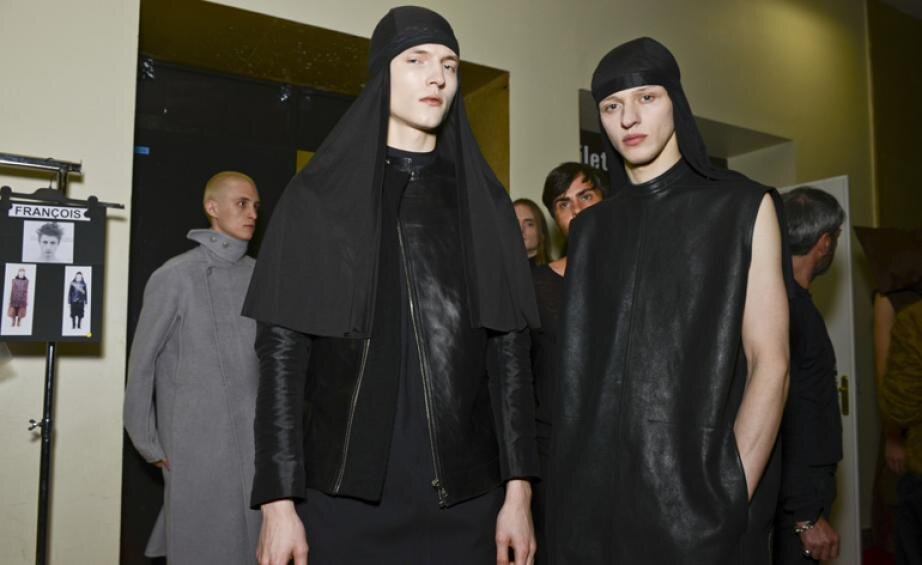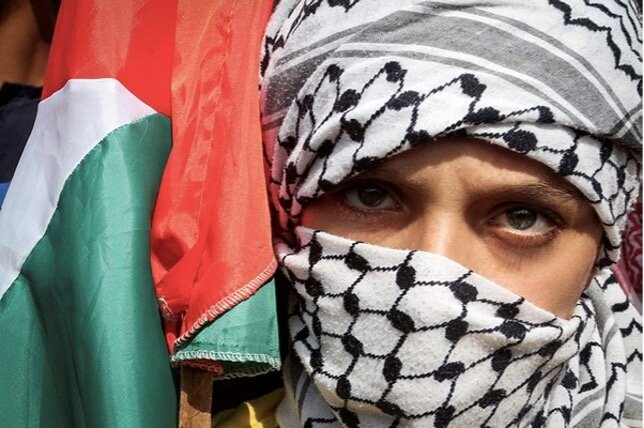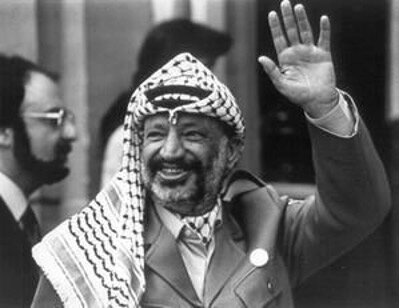Durags x Keffiyehs: Fashion Meets Practicality, Meets Politics
Yasmine Ben AbdesallemWhat is the similarity between a Durag and a Keffiyeh? They are both objects that display strong political statements, and their meanings have been re-interpreted over the course of history.
The Durag
The Durag is a major symbol of the Black Community. In practice, it is a fabric that helps to keep the men’s waves on point, and for women, it is a common solution to flyaway baby hairs and moisture loss.
It has been said that the durag is dated back to the early 19th century, first used by slaves as a means to tie their hair back while working. Others claim that it was invented in 1979 by the father of Darren Dowdy, the president of Many Waves. At that time, in the late ’70s, Durags became an iconic staple for Black activists of movements such as Black Power, that embraced the notion of natural hair and all the trimmings that came with it. It was then popularised in the 90s and early 2000s by rappers such as Cam’ron, who sported a pink drag under a pink bucket hat while performing in the Rap City basement, 50 Cent, Nelly, and Jay-Z. Although its use is practical, it often signifies a shared experience of Blackness.
However, at the same time, the 90s witnessed the rise of “respectability politics”, a movement seen as antithetic to the existence and wearability of Durags. The 1994 Crime Bill and Michael Bloomberg’s “Stop and Frisk” policy in New York City helped further enable the criminalization of Black people who fit a description that fell under the spectrum of "respectability politics”. For Black people, those descriptions felt like hidden messages that included durags, especially as racial profiling grew increasingly rampant. The durag became a state-sanctioned symbol of criminality, an easy sign that allowed to sideline young Black men.
Still, in 2014, Rihanna wore a durag on a Red Carpet to match her Adam Selman dress to receive the CFDAFashion Icon award. This was a powerful message as durags had a negative connotation for a long time, and her look showed that Black culture is part of high fashion (despite racially systemic practices that continue to marginalize many people of color from the fashion industry).
Interestingly, when durags were brought back on red carpets by Rihanna, it also became the “next” fashion accessory, claimed by White designers. We increasingly saw white designers sending white models down the runway during Fashion Weeks wearing durags, from Rick Owens in 2014 to Tom Ford in 2018.
“Although on the surface, [it] seems like a silly, trendy borrowing of ’90s hip-hop culture, what is actually happening is that the reality star is carrying this look into public spaces where Black people also wearing du-rags might be denied access or harassed for wearing them,” wrote Refinery29.
The Keffiyeh
The Keffiyeh ( كُوفِيَّة in Arabic) is a traditional Arabic scarf, that originated in the Arabian Peninsula and that is now worn and present in the Middle East. Keffiyehs differ along with the countries where they are produced and worn, so you will often find different types in Egypt Yemen, turkey, Jordan, but most importantly Palestine. Originally, it was commonly found in arid regions such as deserts, as it provides protection from sunburn, dust, and sand.
So, how did it become a political statement?
In Palestine, it was mostly worn by farmers, but gradually became possessed by Palestinian men of any rank and became a symbol of Palestinian nationalism during the Arab Revolt of the 1930s. Professor Swedenburgand others who have studied the history of the kaffiyeh, explain that in the insurrection against the British occupation from 1936 to 1939, the kaffiyeh became a symbol of Palestinian nationalism as well as an expression of class struggle. The insurgents forced upper-class Palestinians, who typically wore the Ottoman fez, to wear the kaffiyeh to show sympathy with the fighters.
It then grew into a real and popular political statement during the ’60s with the beginning of the Palestinian resistance movement and its adoption by Palestinian leader Yasser Arafat. Arafat would wear his keffiyeh in a semi-traditional way, wrapped around his head via an agal. His personal trademark included draping the scarf over his right shoulder only, arranging it in the rough shape of a triangle, to resemble the outlines of the territory claimed by Palestine.
Outside of the Middle East and North Africa, the keffiyeh first gained popularity among activists supporting the Palestinians in the conflict with Israel. But it became, just like the durag, a symbol appropriated by people that did not live a single sign of oppression related to the conflict. Urban Outfitters for example started selling them in2007, and then decided to stop selling keffiyehs after “a pro-Israel activist… complained about the items”, and the store also issued a statement that “the company had not intended ‘to imply any sympathy for or support of terrorists or terrorism’ in selling the keffiyehs and was pulling them”. Interestingly, while for some it is an item that equates to terrorism, for the whole Arab community it is a sign of liberation and attachment to the Palestinian cause. In a similar vein, in 2016 Topshop released a romper with the Keffiyeh print, calling it a"scarf playsuit". This led to accusations of cultural appropriation and Topshop eventually stopped selling the keffiyehs and pulled the items from their website.
The commercialization of Keffiyehs can be particularly hurtful for Palestinians. Omar Joseph Nasser-Khoury, a Palestinian fashion designer, explained the political connotations behind the keffiyeh, which symbolizes “dispossession, systematic displacement, extrajudicial killings [and] oppression”. Its use by designers divorced from that context is, he says, irresponsible. “It’s almost disrespectful and it’s exploitative.”
But, it can also harm family businesses and retailers. Since 1961, The Herbawi Factory in Hebron has been the only existing factory that produces the original keffiyeh in Palestine. However, in the 90s, replicated keffiyehs were increasingly imported by China In the mid-90s, and they started to circulate due to globalization and GATT (General Agreements on Tariffs and Trade). In turn, The Herbawi Factory was forced to lower sale prices, as it could not compete with the mass production and cheaper costs of the Chinese manufacturers.
Nowadays, the older generation of Arabs displays the keffiyeh as utilitarian headwear, but the younger generation still wears it to expressly show support of the Palestinian cause. In Palestine, it is also a tool used by militants on their faces.
(A picture of me wearing my grandfather’s keffiyeh).
As rightly put by the New Arab:
"For the record, this is not about who "owns" or is "allowed" to wear the keffiyeh. It is a reminder that some garments are inextricably linked to certain cultures and histories, and to capitalize on them without the knowledge, sensitivity, or respect shown towards them is just inappropriate and offensive.”
To sum up, the appropriation of symbols such as the durag & the keffiyeh as a fashion statement by non-Arab wearers or non-Black ones separate from its political and historical meaning has been the subject of controversy in recent years. While it is worn often as a symbol of solidarity, the fashion industry has disregarded its historical meanings by using them as simple fashion accessories.
Sources https://zora.medium.com/how-the-durag-became-a-political-statement-7006a7a2f564https://level.medium.com/how-the-durag-beat-both-respectability-politics-andgentrification-2499c161f333https://en.wikipedia.org/wiki/Keffiyehhttps://www.nytimes.com/2007/02/11/fashion/shows/11KAFFIYEH.htmlhttps://www.theguardian.com/fashion/2019/aug/09/the-keffiyeh-symbol-ofpalestinian-struggle-falls-victim-to-fashion https://shadesofnoir.org.uk/globalization-and-symbols-of-nationalism-the-keffiyeh/







